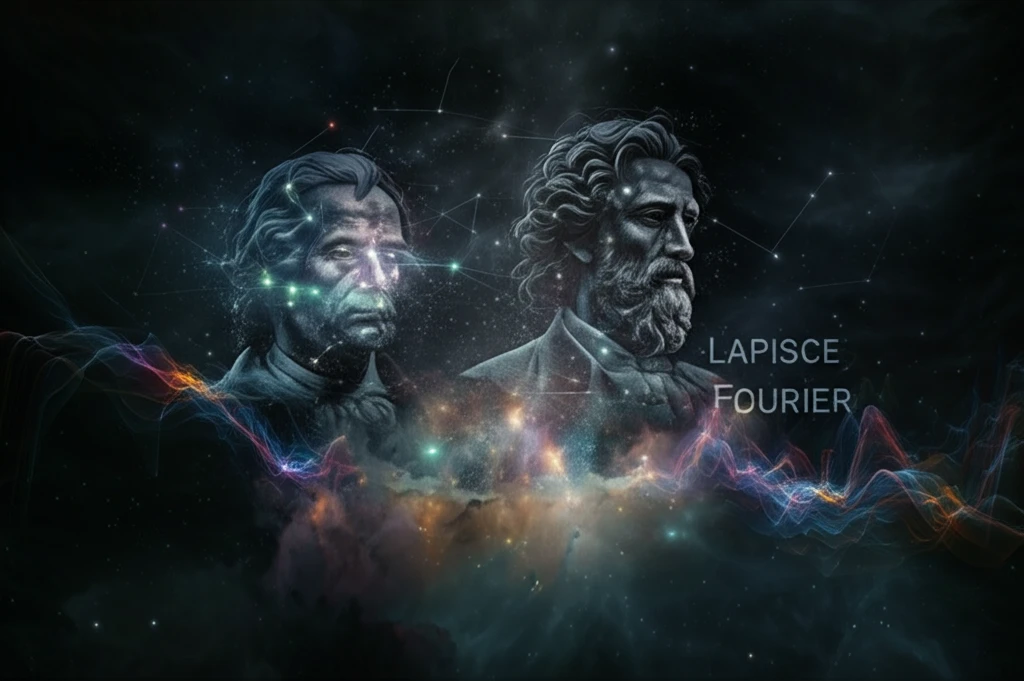
Decoding Diffusion: How Laplace and Fourier Revolutionized Probability and Physics
"Uncover the surprising links between heat flow, random motion, and the mathematical minds that shaped modern science."
Imagine a world where the seemingly disparate fields of heat transfer and probability theory are intertwined. This is the legacy of Pierre Simon Laplace and Joseph Fourier, two mathematical giants whose work in the early 19th century laid the foundation for understanding stochastic diffusion—the random movement of particles—and its profound connections to the physical world.
Albert Einstein's groundbreaking 1905 paper on Brownian motion propelled stochastic diffusion into the limelight. However, the seeds of this concept were sown a century earlier by Laplace, whose work on probability, particularly the Central Limit Theorem, hinted at a deeper relationship. This relationship became even more apparent during a brief but crucial period between 1807 and 1811 when Laplace's work intersected with Fourier's study of heat movement.
While Laplace, a physicist at heart, approached stochastic diffusion from an abstract, mathematical perspective, Fourier focused on bringing observable physical processes, like heat flow, within the grasp of rigorous mathematics. This dichotomy, the unification of the abstract and the observable, is a key element in understanding their combined impact, as noted by T.N. Narasimhan in his exploration of their interwoven legacies.
Fourier's 'Same Expression': Bridging Abstraction and Reality

Fourier himself recognized the remarkable consilience between his theory of heat and the theory of probability. In his "Preliminary Discourse" of Analytical Theory of Heat, he observed that the same mathematical expression could describe both the motion of light in the atmosphere and the laws of heat diffusion in solid matter, highlighting its role in probability theory. The question then becomes: what specific mathematical expression so impressed Fourier, and how does it connect the observable and the abstract?
- Thermal Conductivity: A proportionality constant linking heat flux with temperature gradient.
- Thermal Capacity: Quantifies the relationship between temperature magnitude and quantity of heat stored in a body.
- Spreading of Probability: Represents increase in uncertainty in cumulative error of a finite number of random variables.
The Enduring Legacy
Laplace and Fourier, as natural philosophers, sought to comprehend a world subject to errors of discrete observations. They devised difference equations and recursive relations that, while not always numerically solvable due to computational limitations of the time, paved the way for differential equations, definite integrals, and convergent algebraic series. Their work laid the groundwork for modern understandings of diffusion, probability, and the interplay between the discrete and the continuous—concepts that continue to shape scientific inquiry today.

